Outer Gates into the Dachau complex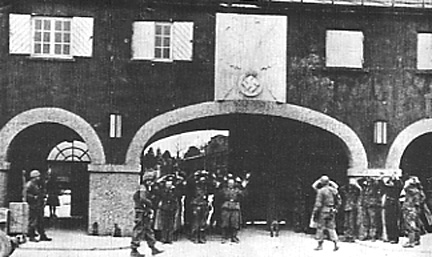 The photo above, taken on April 29, 1945, the day that Dachau was liberated, shows the main entrance into the Dachau complex. This gate was located on the south side of the 20-acre Dachau site; it has since been torn down. The Dachau complex consisted of an SS Training Camp, an army garrison and a separate 5-acre concentration camp, located on the east side of the complex. In the model of the camp shown below, the concentration camp is the rectangle on the far right and the SS area makes up the rest of the complex. The main gate is shown as a large building on the lower right in the photo of the model.  The Dachau concentration camp prison enclosure was located inside the Dachau complex, a short distance northeast of the main entrance, along an interior road with factories on each side. The photo below shows the entrance into the concentration camp. This is the gate with a sign that reads "Arbeit Macht Frei". 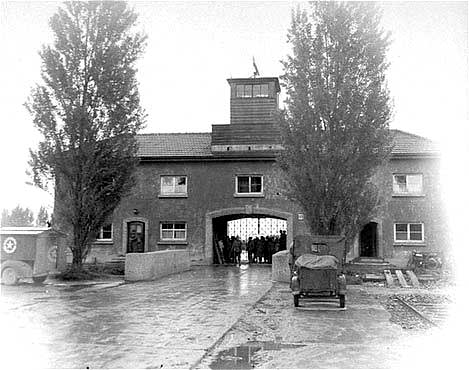 Two divisions of the US Seventh Army, the 45th Infantry Division and the 42nd Infantry Division, participated in the liberation of the Dachau camp. The soldiers in the 45h Division entered the Dachau complex through a railroad gate, which is shown on the far left in the photo of the model, on the southwest side of the Dachau complex. The railroad gate is no longer in existence. The 45th Division soldiers had followed the "death train", shown in the photo below, that was parked partly outside the SS garrison and partly inside, filled with the dead bodies of prisoners who had died on the three-week trip from the Buchenwald camp to Dachau. Note that most of the train cars are open gondola cars, not boxcars. 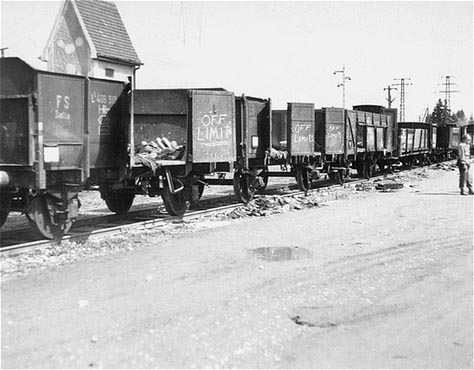 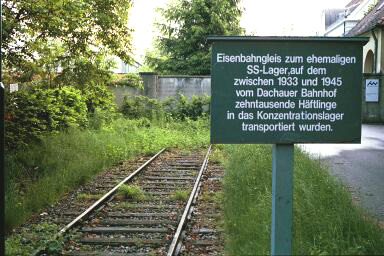 A railroad spur line, that had formerly extended from the train station in the town of Dachau to the SS garrison, was removed in 1985, but a section of the track has been preserved as a memorial, shown in the photo above. The sign says that tens of thousands of prisoners were transported to the concentration camp on this railroad line between 1933 and 1945. However, most of the prisoners had to walk 3 kilometers from the Dachau train station to the camp along Friedenstrasse (Peace Street). The SS garrison was not opened until 1936.  The photograph above shows a small gate into the SS garrison on the southwest side of the Dachau complex. Note that there are no railroad tracks going through this gate; it was not the railroad gate that the American troops first entered when they liberated Dachau. A close-up of this gate, which no longer exists, is shown in the photo below. 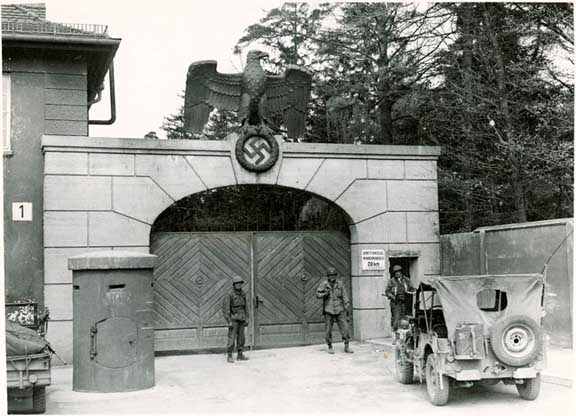  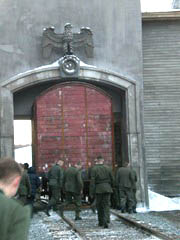 A new movie entitled Shutter Island, which will open in American theaters in February 2010, shows scenes based on the liberation of Dachau. A gate was constructed for the movie, as shown in the two color photos above. The gate is supposed to represent the railroad gate, through which American soldiers entered into Dachau, but instead, it resembles the southwest gate shown in the old black and white photo above. Note the reconstruction of a Nazi eagle holding a swastika. The tower on top of the reconstructed gate in the movie resembles the tower of the Gate of Death into the Birkenau camp at Auschwitz in Poland. The railroad line from the Auschwitz train station was extended through the gate into Birkenau, so that the victims could be brought right up to the gas chambers. The railroad line that entered Dachau carried materials into the SS garrison; it did not go through a building or an arched entrance gate. The victims at Dachau had to walk to the gas chamber which was located outside the concentration camp enclosure. 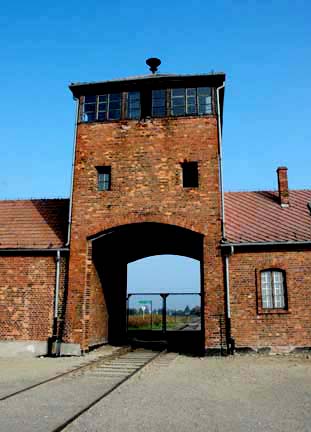 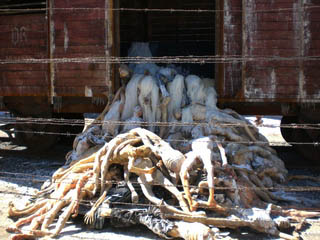 The photo above shows a scene from the movie Shutter Island which depicts the corpses found on the "death train" at Dachau. This ficticious photo resembles the real photos of the train, combined with real photos of the pile of corpses found outside the crematorium at Dachau. There were no naked corpses piled up outside the "death train." Note the barbed wire fence which indicates that the train in the movie was parked inside the Dachau concentration camp enclosure; the real-life "death train" was partly inside, and partly outside, the SS garrison, which was next door to the concentration camp. The horrible scene of the "death train" was what prompted American soldiers of the 45th Infantry Division to kill German soldiers who had been sent to Dachau to surrender the camp. The author of the novel, on which Shutter Island is based, mentions that "500 Krauts" were killed by the American soldiers. In 1954, at the time that the story in the movie was taking place, the shooting of unarmed German soldiers at Dachau was still a closely guarded secret, which would not be known for another 40 years. The main character in the movie, played by Leonardo DiCaprio, was involved in the Dachau massacre, which is shown in a flashback. The photo below shows SS 2nd Lt. Heinrich Wicker surrendering the concentration camp to Brig. Gen. Henning Linden of the 42nd Division of the U.S. Seventh Army. This photo was taken near another gate into the SS garrison which was a short distance west of the main gate on the south side of the Dachau complex. Wicker was one of the German soldiers that was killed by the American liberators. 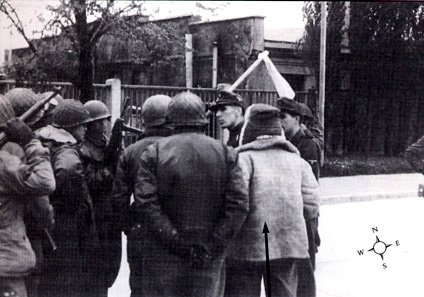 The photo above shows the gate on the south side of the Dachau complex, near where SS 2nd Lt. Heinrich Wicker surrendered the camp to the 42nd Division of the U.S. Seventh Army. Back to Dachau LiberationHomeThis page was last updated on December, 2009 |